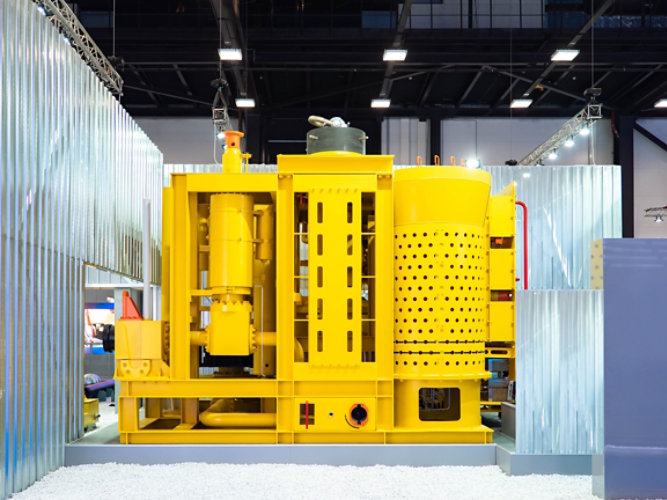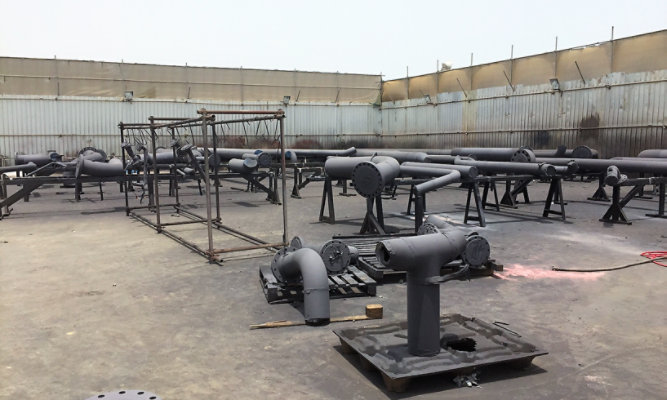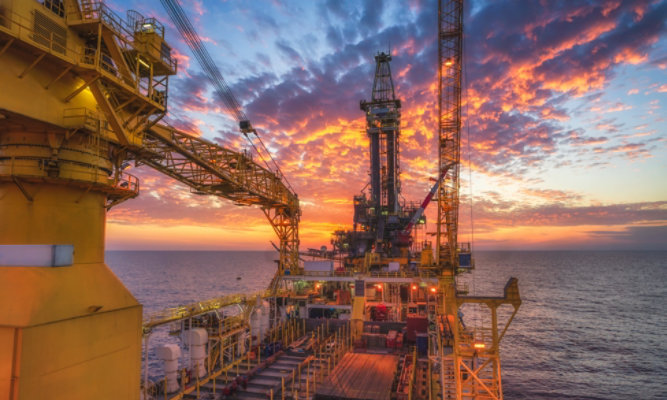How to Choose the Right Subsea Coatings Supplier
Demand Performance, Extensive Solutions and Availability to Realise the Best Outcomes
by Travis Crotwell, Business Development Manager – Upstream Oil & Gas, Sherwin-Williams Protective & Marine

When the equipment you own and operate needs to be submerged on the seafloor for up to three decades at a time, it had better last. So should the coatings applied to that equipment to protect it from corrosion and wear. Any premature coating failure could lead to damaged equipment and the costly expense of pulling it up early for repair or replacement – not to mention the associated downtime costs while that equipment is offline.
So how do you choose the right coatings to withstand the aggressive corrosive conditions and elevated operating temperatures associated with subsea exploration and production activities? It starts with choosing the right coatings supplier – one that can deliver qualified products that perform, offer a breadth of coating solutions covering every application need, and provide the product availability and support required to deliver materials on time and be on-site for critical startup and troubleshooting needs.
Learn More and Get in Touch
Our subsea solutions include a range of coatings and a team of industry experts. Let's get your next project started.
Demand Performance
Robust protective coatings that resist corrosion and damage and are able to withstand the high operating temperatures of deep well drilling and production are the primary key to the long-term operation of subsea equipment. When coatings are damaged or otherwise fail, steel substrate corrosion follows. As corrosion proliferates, the steel may weaken and even break or rupture. This deterioration can put equipment such as compressors, separators, jumpers, Christmas trees, risers and manifolds at risk – not to mention workers and the environment.
The inherent costs of downtime and the risks of catastrophic failures mean owners and operators of subsea equipment must be focused on carefully selecting coatings that meet the specific requirements of their equipment operating environments over the long term. The coatings should also be backed by thorough testing and have a strong track record of performance in the field to prove their value. That includes both liquid coatings used on subsea production systems (SPS) and powder coatings used on subsea umbilical, riser and flowline (SURF) assets.
Comprehensive lab testing and prequalification to global industry standards are critical requirements of any coating used for subsea service. For example, liquid coatings applied to submerged subsea assets must adhere to NORSOK M-501 Revision 6 Coating System 7B (for ambient and standard operating temperatures up to 50°C/122°F) or 7C (for high operating temperatures greater than 50°C/122°F, up to 392°F/200°C) guidelines. In addition, liquid coatings used on assets operating in the splash zone must meet NORSOK M-501 Revision 6 Coating System 7A requirements. On the powder coatings side, single layer fusion-bonded epoxy (FBE) coatings must meet ISO 21809 Series requirements for the corrosion protection of buried or submerged bare steel pipe for use in pipeline transportation.
Owners of subsea equipment and the engineering, procurement and construction (EPC) companies that support them must confirm the above NORSOK and ISO qualifications at a minimum when selecting coating solutions. They should also look beyond those minimum requirements to comprehensive lab tests and data that demonstrate long-term performance capabilities beyond the industry standards. Testing that correlates with real-world scenarios is especially helpful. Such tests represent the types of conditions anticipated in various subsea environments, giving owners validation that the selected coatings will perform well when placed in service.
Even better, data and revelations from real-world field tests and applications can demonstrate true-to-life performance. Coatings suppliers often work directly with owners and EPCs to test specific systems against vigorous requirements and address challenges they’ve encountered with other solutions. Every published data point and case history provides another proof point for evaluating a coating’s long-term performance capabilities.
A good example of testing for a real-world scenario is the third-party NORSOK M-501 7A corrosion testing Sherwin-Williams Protective & Marine contracted for its Dura-Sub® C1230 ultra-high solids epoxy novolac coating for splash zone environments. Knowing that subsea equipment is prone to long exposures to ultraviolet (UV) light and atmospheric marine conditions during transport and project delays, Sherwin-Williams wanted to ensure Dura-Sub C1230 could withstand those extended exposures. That meant subjecting test panels to 4,200 hours of cyclic aging testing per ISO 20340 to simulate atmospheric marine exposure. The testing validated the coating’s performance, giving owners and EPCs confidence that coated assets can sit dockside without worrying the coatings will deteriorate prematurely if a project is delayed. Without that validated performance, owners and EPCs may be forced to undergo the unplanned time and cost of erecting temporary storage structures to house equipment on-site during delays.
Seek a Breadth of Products
While the performance of coatings solutions is the most critical factor in their use, it’s also important to have a variety of options available to meet specific industry needs. Sometimes a specialty coating is required to combat especially corrosive seawater. Other times, a coating must be compatible with especially high operating temperatures. Suppliers that offer a breadth of solutions can help owners and EPCs not only find the best solution for a particular asset but also secure their supply chains.
Owners and EPCs that choose their coating suppliers carefully may be able to work with ones that offer both powder and liquid coatings for specialized subsea applications. Having one point of contact for both types of coatings can help to ensure proper compatibility between liquid and powder coatings and their substrates, as well as the anticipated operating conditions. Using one supplier helps owners and EPCs reduce their touchpoints for streamlined ordering and delivery. It can also help them realize more consistency in product quality and service.
Suppliers that offer a variety of liquid coating options enable owners and EPCs to specify the most appropriate epoxy technology, for example, for various submerged or splash zone SPS applications. The operating environment and conditions will dictate the best coating system to use, but with multiple options available from the same supplier, specifiers can easily select the ideal coating for the asset involved. This is especially helpful when the optimal coating system varies depending on the type of asset and its operating temperature.
For powder coatings, access to a variety of products for SURF assets is helpful to give owners and EPCs options that meet specific operating conditions or installation needs. With multiple options available, they can find the FBE coating that offers the right combination of glass transition temperature, flexibility, and barrier and damage-resistant properties. For example, a variety of Dura-Sub C FBEs can offer efficiencies in laying pipelines for subsea tiebacks by allowing for reel-lay installations, even for high operating temperature applications. In reel-lay installations, miles of pipeline can be welded together and coated onshore in a controlled environment before being spooled onto large reels for submersion in the ocean. This method is much more efficient and cost effective than welding and coating every field joint on a barge before submerging the pipeline using the S-lay or J-lay method. Barges are very costly to operate, and it can take extended periods to install subsea pipe when operating completely offshore.
Mandate Availability and Support
It’s one thing to offer a breadth of products that perform. It’s another thing to have those products readily available at the time they’re needed for coating applications. That’s where distribution logistics are so critical, demanding coating suppliers that are not only able to deliver materials on time but also provide timely support.
Look for suppliers that manage their own shipping fleets, as they’re better able to ensure materials will arrive to application sites on schedule. Those that manage their own supply chain of resources, including raw materials, are also more likely to have what’s needed when it’s needed. In addition, suppliers offering readily available technical support can help to back projects from inception to completion by contributing to the development of project specifications and providing direct, on-site support for coating applications.
Choose Carefully
Oil and gas production assets placed deep on the seafloor demand maximum protection against corrosion and high-operating temperatures. The margin for error is so thin in extreme subsea environments that you can’t put a price on performance. That means finding the right supplier that can drive cost savings via a breadth of product options – both liquid and powder – that are readily available and backed by comprehensive support. Look for suppliers that invest in both people and testing resources to strengthen coatings capabilities in the subsea oil and gas market, as they can add value to any project.
ABOUT THE AUTHOR
Travis Crotwell is Business Development Manager – Upstream Oil & Gas for Sherwin-Williams Protective & Marine. His responsibilities include serving as a corrosion specialist and providing engineering support for owners, operators and EPC firms. Additionally, he is responsible for market opportunity and market development across the upstream oil and gas market segment. Crotwell has 15 years of industry experience, including 14 years with The Sherwin-Williams Company, previously serving as a Field Technical Service Representative, NACE Coatings Inspector, Protective Coatings Specialist and Project Development Manager. Crotwell is a NACE CIP Certified Coating Inspector, SSPC CCI Certified Coatings Technician and a board member for the SSPC Gulf Coast Chapter. Contact: Travis.M.Crotwell@sherwin.com
Discover More
Industry Expertise and Innovation
See how we help customers find customised solutions for their project and application challenges.
Our Oil & Gas Expertise
Explore our industry solutions and technology to help protect your assets.
LEARN MOREProduct Lookup
Find out more about our innovative coatings for a variety of industries.
FIND A PRODUCT


